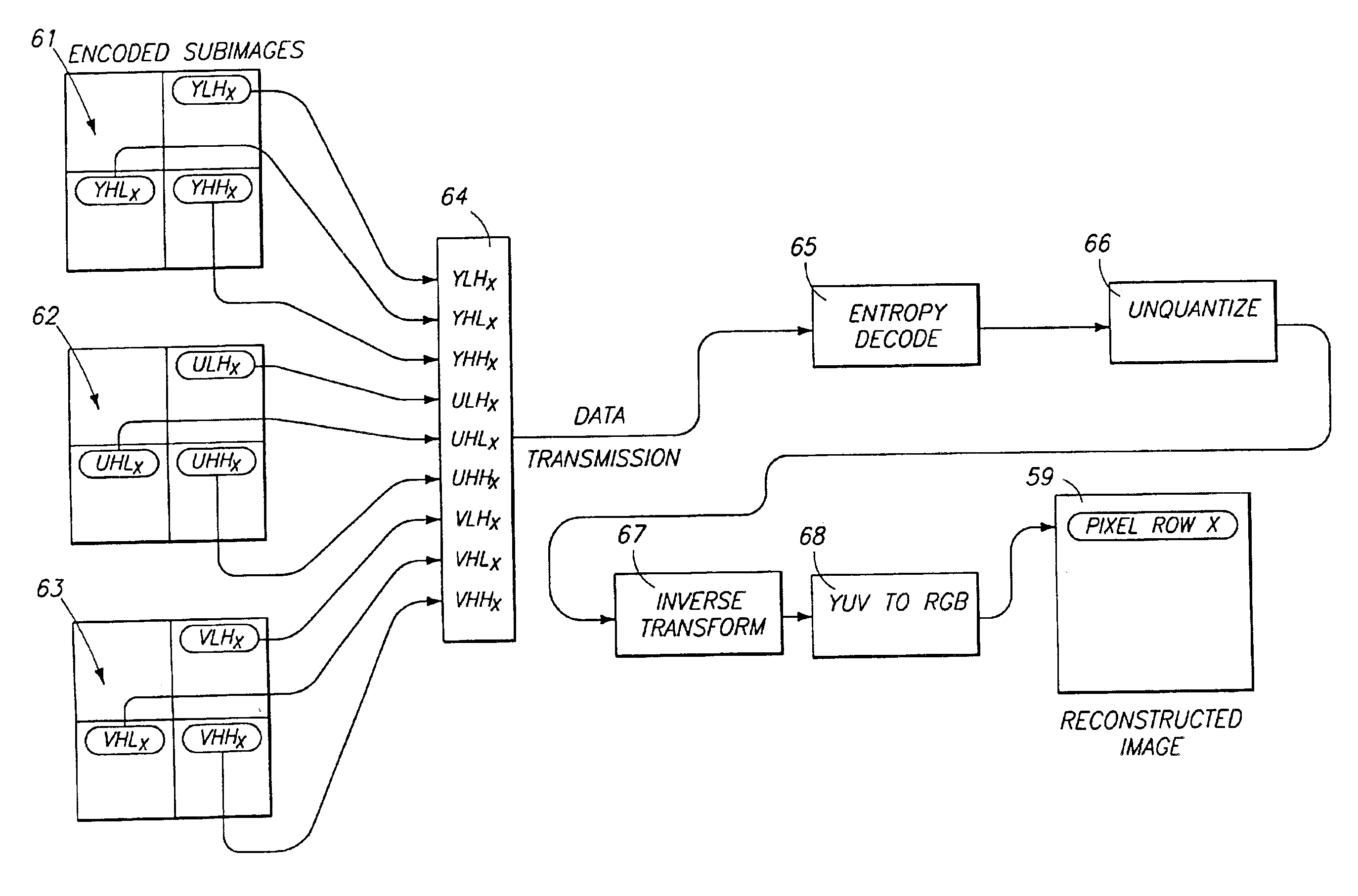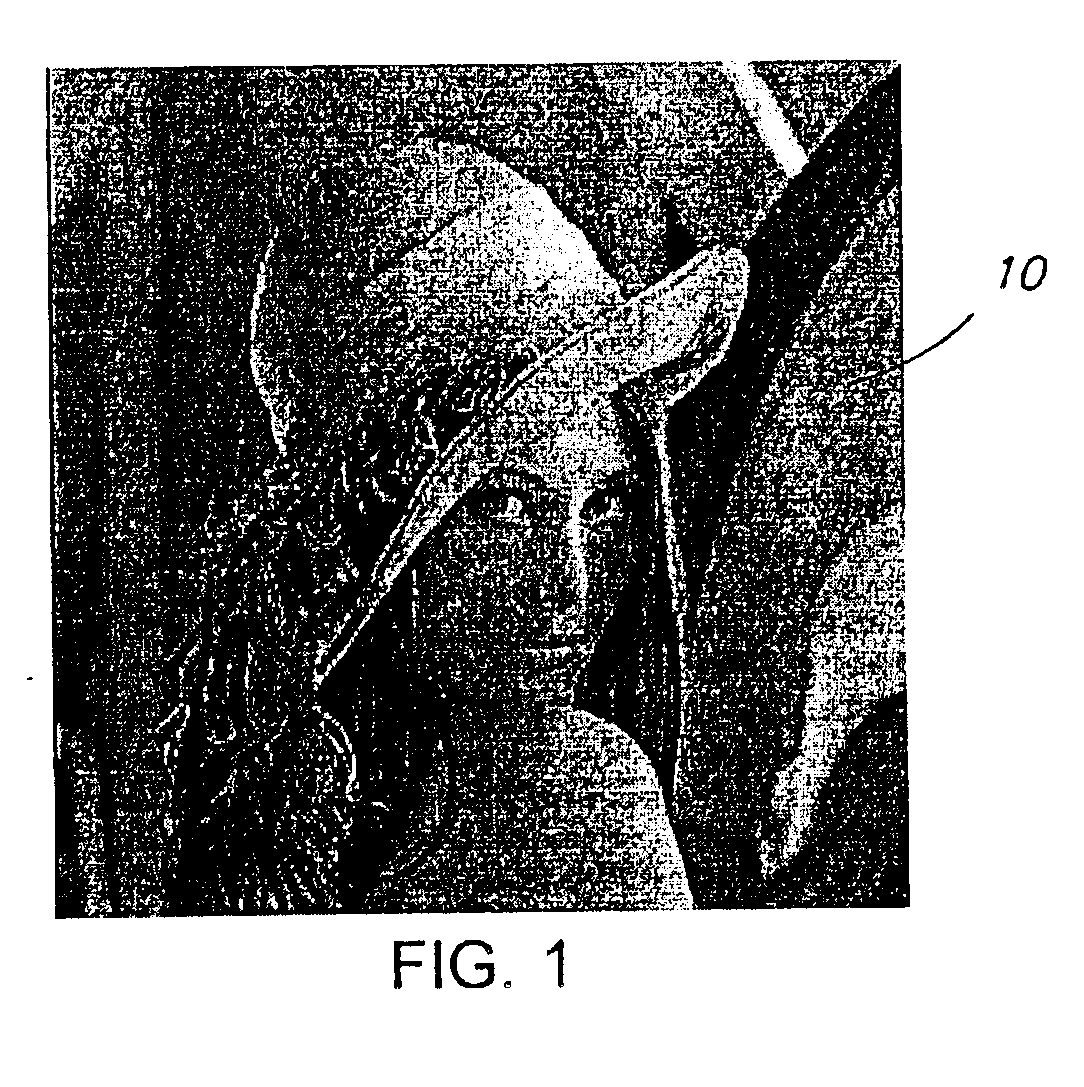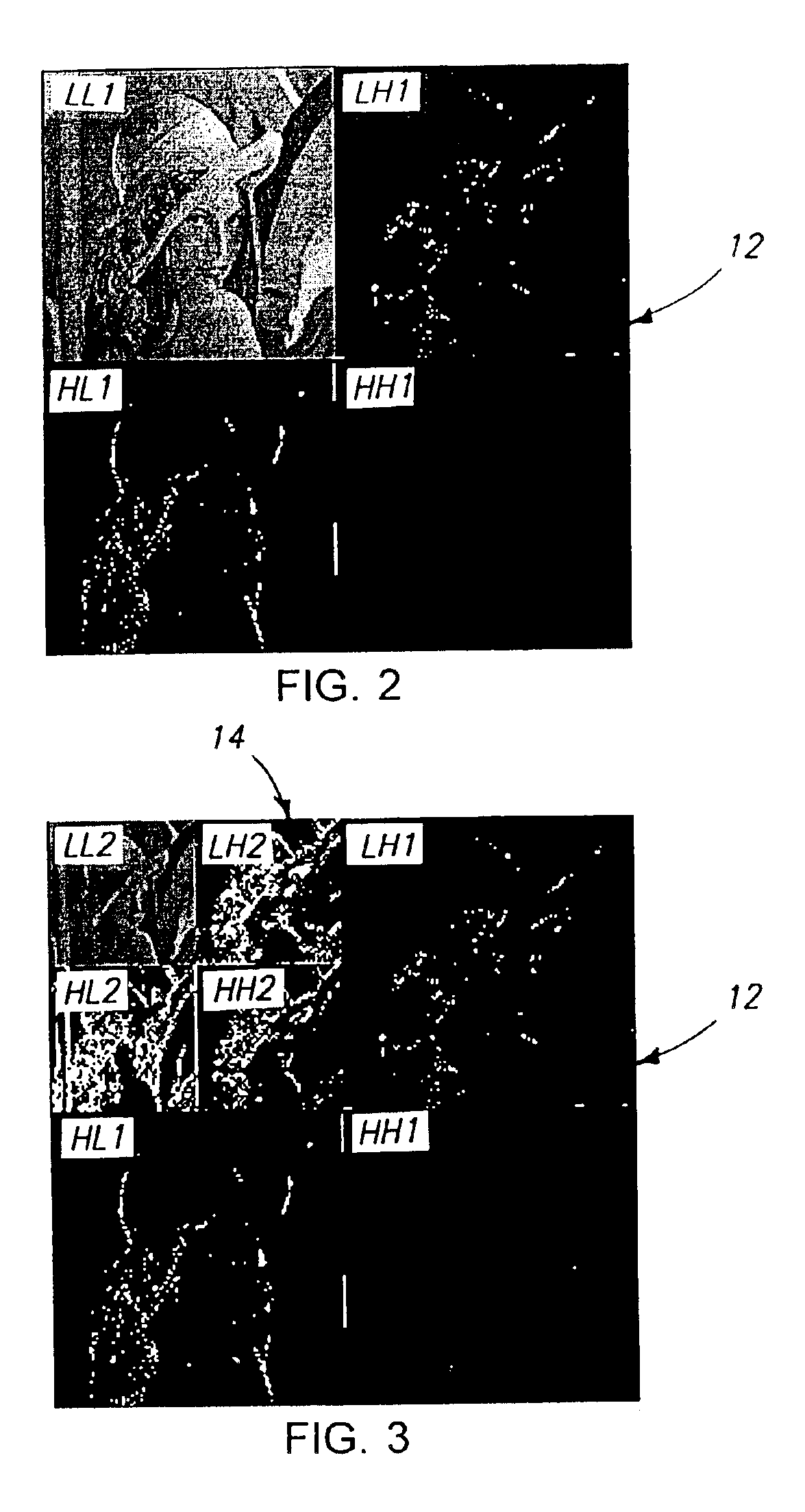Progressive image transmission using discrete wavelet transforms
a wavelet transform and image technology, applied in the field of progressive image transmission using discrete wavelet transforms, can solve the problems of high-resolution images that can still take several minutes to transfer, can be very frustrating, and can be difficult to find useful images, etc., and achieve the effect of convenient pre-viewing and higher image resolution
- Summary
- Abstract
- Description
- Claims
- Application Information
AI Technical Summary
Benefits of technology
Problems solved by technology
Method used
Image
Examples
Embodiment Construction
The invention described below is useful for storing, transferring, receiving, and viewing still images. The invention is particularly useful in combination with transferring images over serial transmission media such as public voice-grade telephone lines or ISDN (integrated services digital network) communication channels. The preferred embodiment is described with reference to grey-scale or RGB still images. A grey-scale image comprises a single color plane having a matrix of pixel or intensity values corresponding to pixel intensities. An RGB image comprises three discrete color planes which each contain a matrix of pixel or intensity values corresponding to pixel intensities. An “R” color plane contains intensities for the red components of pixels. A “G” color plane contains intensities for the green components of pixels. A “B” color plane contains intensities for the blue components of pixels. Other still image representations could also be transferred using the methods of the i...
PUM
 Login to View More
Login to View More Abstract
Description
Claims
Application Information
 Login to View More
Login to View More - R&D
- Intellectual Property
- Life Sciences
- Materials
- Tech Scout
- Unparalleled Data Quality
- Higher Quality Content
- 60% Fewer Hallucinations
Browse by: Latest US Patents, China's latest patents, Technical Efficacy Thesaurus, Application Domain, Technology Topic, Popular Technical Reports.
© 2025 PatSnap. All rights reserved.Legal|Privacy policy|Modern Slavery Act Transparency Statement|Sitemap|About US| Contact US: help@patsnap.com



